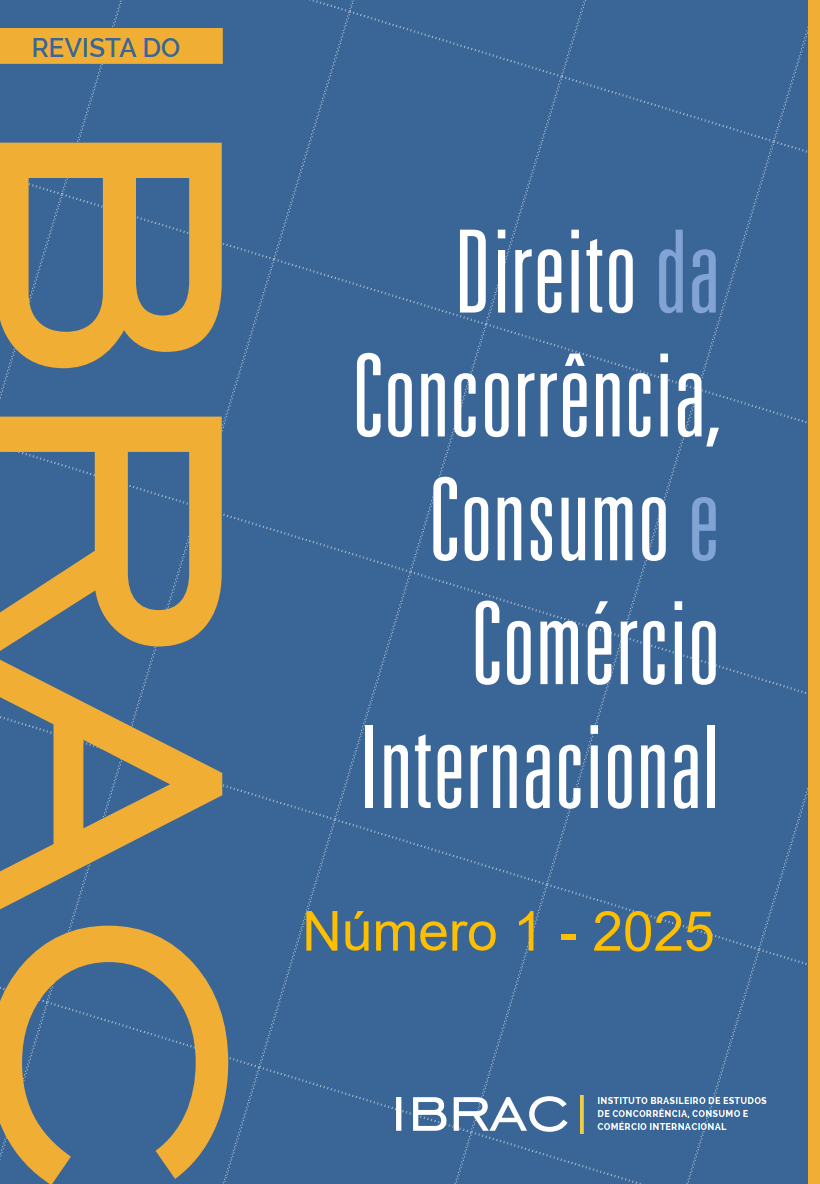What is the influence of the rapporteurs on the decisions of the CADE Court? an econometric approach for mergers between 2014-2023
Main Article Content
Abstract
This article evaluates, using an econometric approach, whether there is any bias in the decisions of the Administrative Council for Economic Defense (CADE) on ordinary mergers derived from the characteristics of the reporting member, such as gender and academic background. To this end, the randomness of the draw in the distribution of rapporteurships is explored. The database contains, between 2014 and 2023, an exhaustive list of the 114 cases known to the GS and judged by the 13 rapporteurs who began their mandate in 2014, the year in which the Electronic Information System (SEI) came into force. During this period, 70% of the Court's rapporteurs were men, a percentage similar to that of law graduates. The General Superintendence (SG) approved 47% of the CAs
without restrictions, of which the Court upheld the decision 88% of the time. When the recommendation was to challenge (53%), the Court approved 81% of the cases with restrictions. The results of the econometric analysis, already considering the SG's recommendation, show that decisions can vary depending on the rapporteur's characteristics, in particular: women or economists are less likely to approve cases without restrictions. These results should be evaluated with caution given the small sample size.
Downloads
Article Details

This work is licensed under a Creative Commons Attribution 4.0 International License.
References
ABRAMS, David; BERTRAND, Marianne; MULLAINATHAN, Sendhil. Do Judges Vary in Their Treatment of Race?. The Journal of Legal Studies 41(2), 347–383. 2012. Disponível em: https://poverty-action.org/sites/default/files/publications/Do%20Judges%20Vary%20in%20Their%20Treatment%20of%20Race%3F.pdf. Acesso em: 04/09/2024.
ANWAR, Shamena; BAYER, Patrick; HJALMARSSON, Randi. The impact of jury race in criminal trials. Quarterly Journal of Economics 127(2), 1017–1055. 2012. Disponível em: https://econpapers.repec.org/article/oupqjecon/v_3a127_3ay_3a2012_3ai_3a2_3ap_3a1017-1055.htm. Acesso em: 04/09/2024.
ARAUJO, Aloisio; FERREIRA, Rafael; LAGARAS, Spyridon; MORAES, Flavio; PONTICELLI, Jacopo.; TSOUTSOURA, Margarita. The labor effects of judicial bias in bankruptcy. Journal of Financial Economics, 150(2), 103720. 2023. Disponível em: https://papers.ssrn.com/sol3/papers.cfm?abstract_id=3757117. Acesso em: 04/09/2024.
BUTCHER, Kristin; PARK, Kyung H; PIEHL, Anne. Comparing Apples to Oranges: Differences in Women’s and Men’s Incarceration and Sentencing Outcomes. Journal of Labor Economics 35(S1), S201–S234. 2017. Disponível em: https://econpapers.repec.org/article/ucpjlabec/doi_3a10.1086_2f691276.htm. Acesso em: 04/09/2024.
CAHUC, Pierre; CARCILLO, Stéphane; PATAULT, Bérengère; MOREAU, Flavien. Judge bias in labor courts and firm performance. Journal of the European Economic Association, 22(3), 1319-1366. 2024. Disponível em: https://www.econstor.eu/bitstream/10419/227321/1/dp13794.pdf. Acesso em: 04/09/2024.
CORBI, Raphael; FERREIRA, Rafael; OLIVEIRA, Jaqueline; SOUZA, Danilo. Female judges and in-group bias in labor courts. Economics Bulletin, 41(3), 1313-1321. 2021. Disponível em: https://www.accessecon.com/Pubs/EB/2021/Volume41/EB-21-V41-I3-P111.pdf. Acesso em: 04/09/2024.
DE MACEDO, Tatiana Nogueira Lima. Está faltando competição no cade? Uma averiguação preliminar das razões para a sub-representação feminina no tribunal do CADE. Revista IBRAC, 29(1), 43–62. 2024. Disponível em: https://doi.org/10.5281/zenodo.11537685. Acesso em: 04/09/2024.
HOEKSTRA, Mark; STREET, Brittany. The Effect of Own-Gender Juries on Conviction Rates. Working Paper No. 25013, National Bureau of Economic Research. 2018. Disponível em: https://www.nber.org/system/files/working_papers/w25013/w25013.pdf. Acesso em: 04/09/2024.
KNEPPER, Matthew. When the shadow is the substance: judge gender and the outcomes of workplace sex discrimination cases. Journal of Labor Economics 36(3), 623–664. 2018. Disponível em: https://ideas.repec.org/a/ucp/jlabec/doi10.1086-696150.html. Acesso em: 04/09/2024.
LIM, Clair; SILVEIRA, Bernardo; SNYDER, James. Do judges’ characteristics matter? ethnicity, gender, and partisanship in texas state trial courts. American Law and Economics Review 18(2), 302–357. 2016. Disponível em: http://www.bernardosilveira.net/resources/Lim_Silveira_Snyder_2016.pdf. Acesso em: 04/09/2024.
PHILIPPE, Arnaud. Gender disparities in criminal justice. TSE Working Paper No. 17-762, Université Toulouse 1 Capitole. 2017. Disponível em: https://publications.ut-capitole.fr/id/eprint/22892/1/Philippe_22892.pdf. Acesso em: 04/09/2024.
SCHANZENBACH, Max. Racial and Sex Disparities in Prison Sentences: The Effect of District-Level Judicial Demographics. The Journal of Legal Studies 34(1), 57–92. 2005. Disponível em: https://www.scholars.northwestern.edu/en/publications/racial-and-sex-disparities-in-prison-sentences-the-effect-of-dist. Acesso em: 04/09/2024.
SHAYO, Moses; ZUSSMAN, Asaf. Judicial ingroup bias in the shadow of terrorism. Quarterly Journal of Economics 126(3), 1447–1484. 2011. Disponível em: https://econpapers.repec.org/article/oupqjecon/v_3a126_3ay_3a2011_3ai_3a3_3ap_3a1447-1484.htm. Acesso em: 04/09/2024.

